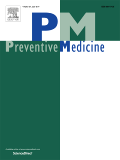Abstract:
OBJECTIVE: We identified household, child, and demographic characteristics associated with not having a smoking ban and having a rule about smoking in the presence of children in an urban population.
METHOD: We conducted a cross-sectional random digit dial telephone survey (n=456) of Philadelphia parents in June 2012.
RESULTS: Forty-eight percent of homes reported a full smoking ban. In homes that allowed smoking, over half allowed smoking in front of children. Cigarettes smoked in the home decreased as the restrictiveness of the bans increased. Multinomial logistic regression analyses showed that compared to having a full ban, banning smoking only in the presence of children was associated with being African-American, having a child >5 years old, and having an asthma-free child. These characteristics, as well as having both parents as smokers and not having an outdoor space, were also associated with not having any restrictions.
CONCLUSION: It is possible that households attempt to reduce home smoking by limiting smoking in the presence of children. Health communication messages should be used to inform families about the lingering effects of SHS in the home even when smoking does not occur in the presence of a child.
Authors
- Amy Bleakley
- Michael Hennessy
- Giridhar Mallya
- Daniel Romer


